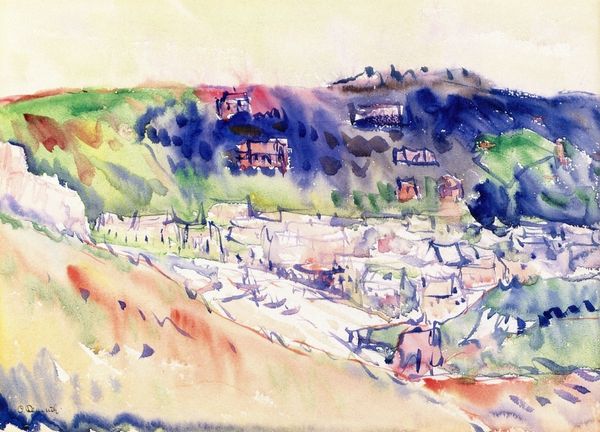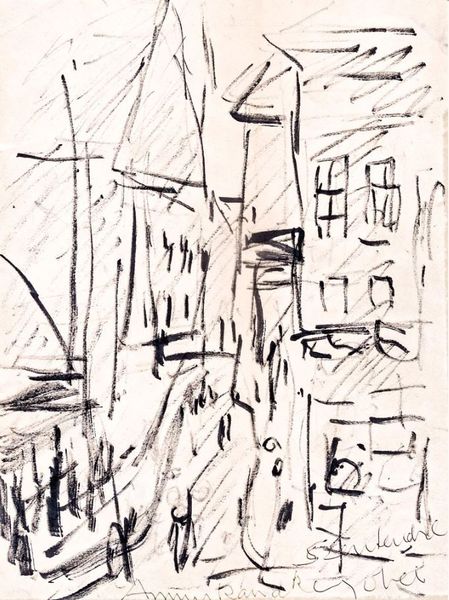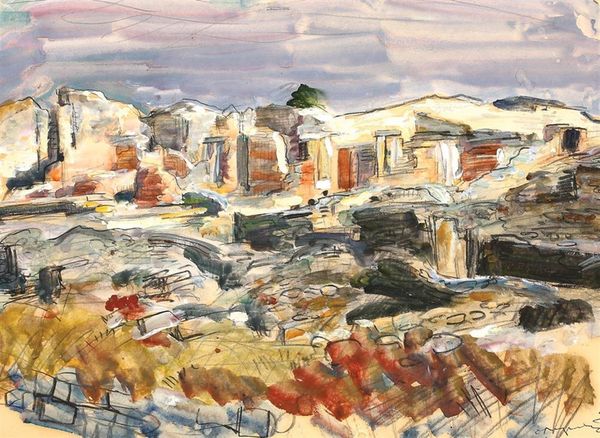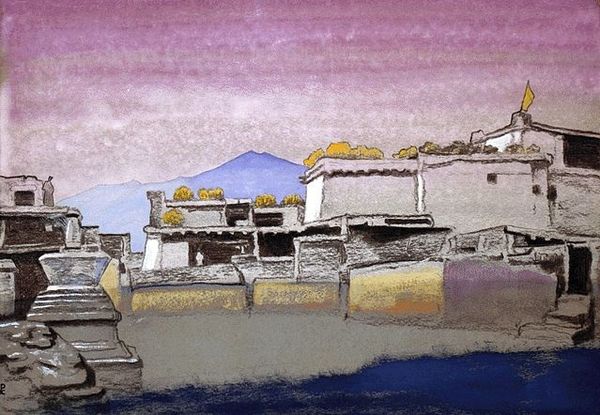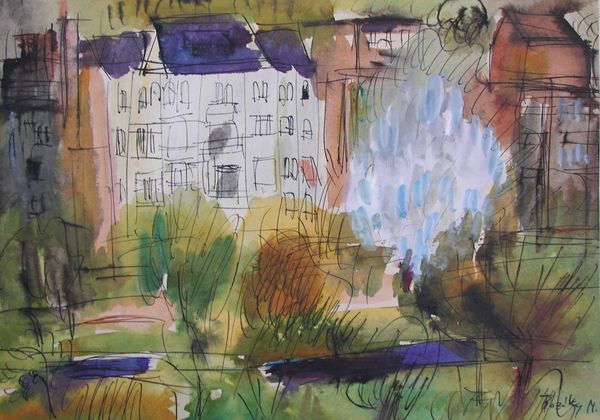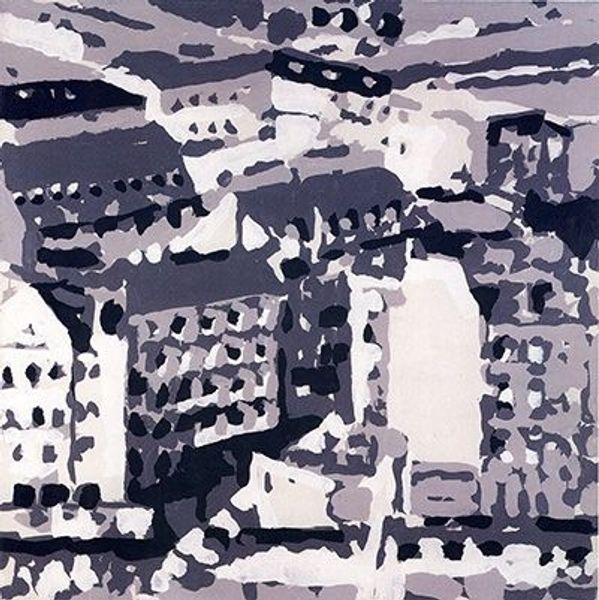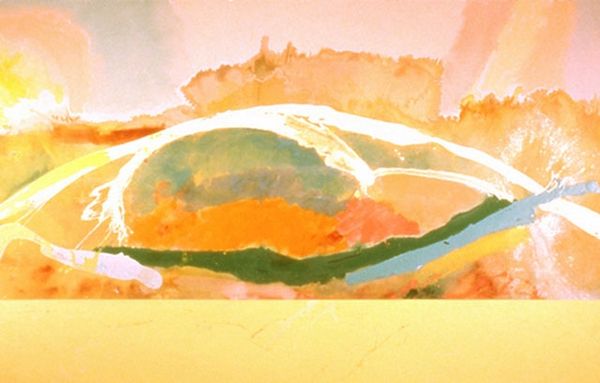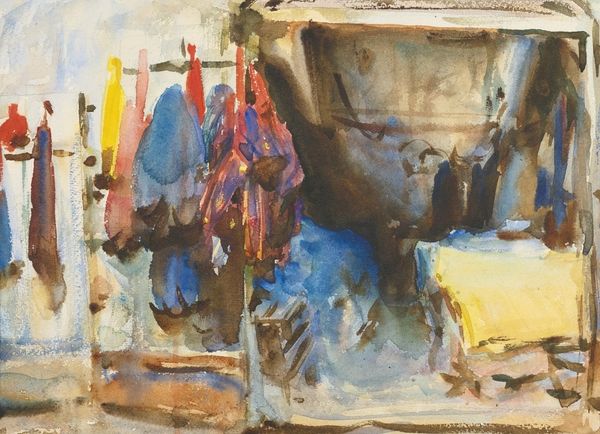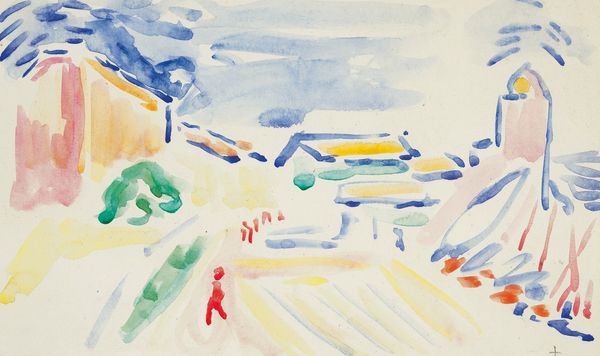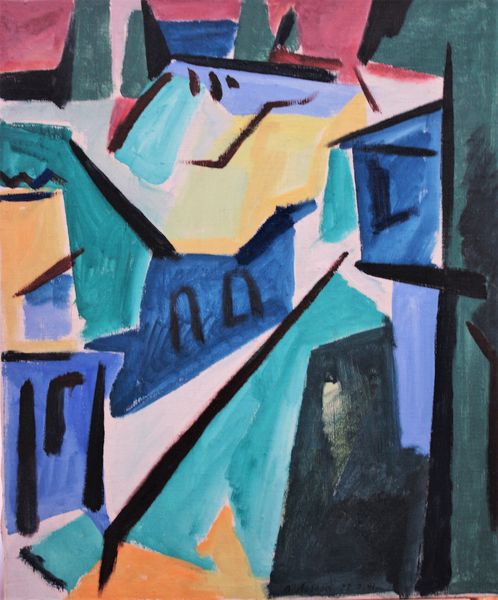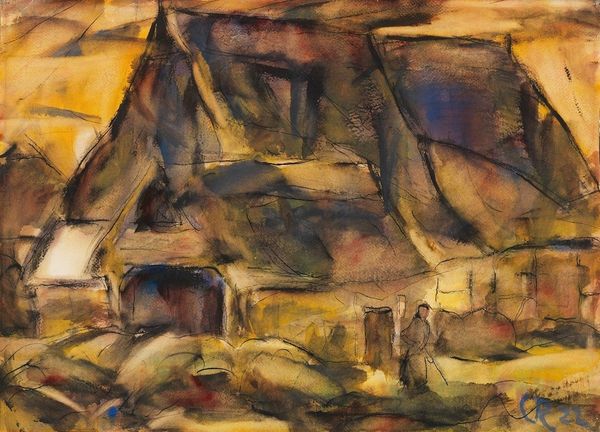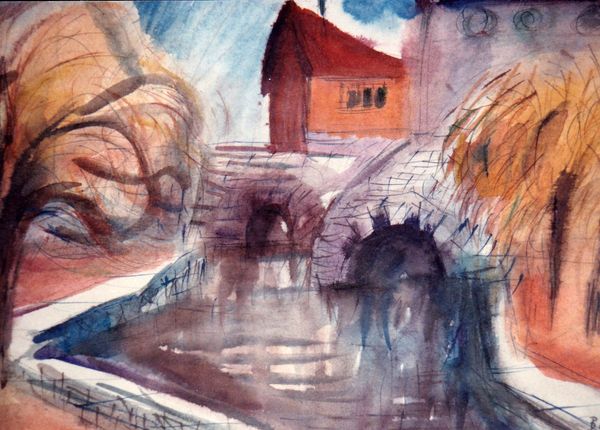
Copyright: Giorgio Cavallon,Fair Use
Editor: Here we have Giorgio Cavallon's "Country Scene" from 1938, rendered in watercolor. It's strikingly abstract, almost a deconstruction of landscape painting. What can you tell me about this piece? Curator: This watercolor is interesting. The layering of washes creates an effect of depth and texture despite its minimalist approach. Consider the accessibility of watercolor in the 1930s—relatively inexpensive and easily transportable. Was Cavallon reacting to the economic pressures of the time, choosing a humble material to represent, and perhaps democratize, the traditionally high-art subject of landscape? Editor: That’s a thought-provoking question. So, the choice of material itself makes a statement. What do you notice in terms of his technique? Curator: Note how the transparent washes build up, creating areas of varying intensity. This reveals the process; the materiality of the paint itself becomes a key element. Are the overlapping shapes symbolic of something more, such as commenting on the labor involved in creating this work? Or in farming and growing things within the “country scene?” Editor: So, it’s less about accurately depicting a landscape and more about drawing attention to the act of painting and how we value what goes into its creation. Curator: Exactly. We can see beyond a pretty picture of a “country scene” to consider the materials, methods, and messages embedded within. Do you find that shift in perspective changes your initial reaction to the work? Editor: Definitely! Seeing it as a statement about artistic labor makes the piece far more compelling. It transforms what I initially thought was just a pleasant landscape into a thought-provoking commentary. Curator: And that awareness is a vital part of engaging with art history. We're not just looking at images, but investigating the world around them, even through something as simple as watercolor.
Comments
No comments
Be the first to comment and join the conversation on the ultimate creative platform.
